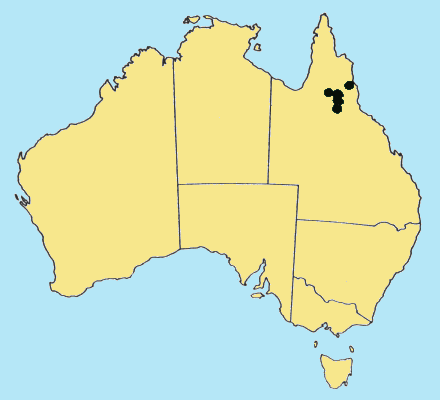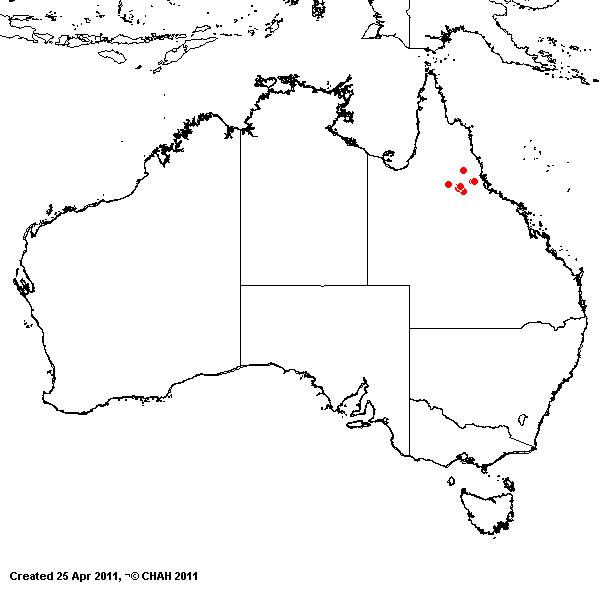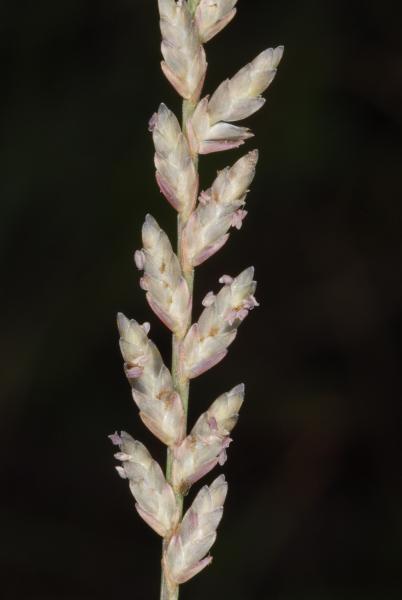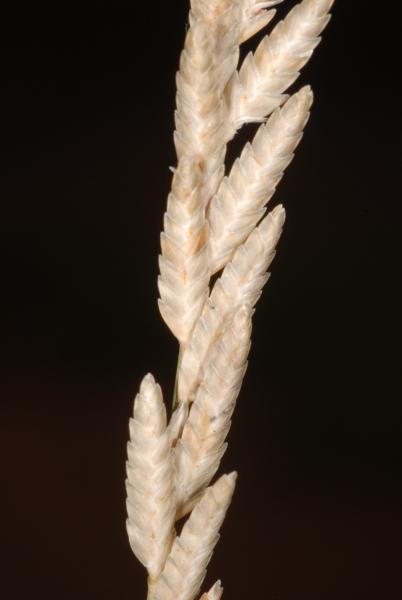Eragrostiella bifaria (Vahl) Bor, in obs. Indian
Forestor 66: 270 (1940).
Classification. (GPWG 2001) : Subfamily
Chloridoideae. Cynodonteae.
Basionym and/or
Replacement Name: Poa bifaria
Vahl, Symb. Bot. 2: 19 (1791).
Type of Basionym or
Protologue Information: HT: without collector, India (C).
Recent synonyms:
Eragrostis bifaria.
Key references
(books and floras): [2002] D.Sharp & B.K.Simon, AusGrass, Grasses of
Australia.
Illustrations:
[2005] K.Mallet (ed.), Flora of Australia 44B: Poaceae 3
(Fig. 74A-Bas var. bifaria).
Habit.
Perennial. Culms erect, 23–60 cm tall, 1–2 -noded. Lateral branches simple.
Leaves mostly basal. Ligule a fringed membrane, a ciliolate membrane, 0.3–0.6
mm long. Leaf-blades filiform, flat or conduplicate or convolute, 4–16(–25) cm
long, 0.6–2.1 mm wide. Leaf-blade surface indumented.
Inflorescence.
Inflorescence solid, a raceme. Racemes 1, erect, 8–22 cm long.
Spikelets.
Spikelets sessile. Fertile spikelets many flowered, with at least 2 fertile
florets (8–50), comprising 8–50 fertile floret(s), with diminished florets at
the apex, elliptic or oblong, laterally compressed, 6–20 mm long.
Glumes. Glumes
similar. Lower glume lanceolate or ovate, cartilaginous, keeled, 1-keeled, 1
-nerved. Upper glume oblong or ovate, 1.8–4 mm long, cartilaginous, without
keels, 1 -nerved.
Florets.
Fertile lemma 1.9–2.6 mm long, keeled, 3 -nerved. Palea 2 -nerved. Palea apex entire. Lodicules
present. Grain 0.4–0.6 mm long.
Continental
Distribution: Africa, Tropical Asia, and Australasia.
Australian
Distribution: Queensland.
Queensland: Cook.
Notes.
A 'resurrection plant'; airdry plants may be rehydrated and will re-establish
active growth given the right conditions.
Sparsely
distributed in a few localities in a relatively small area in NE Qld;
distributed over virtually the entire range of the genus in India, Ceylon,
Burma, eastern Africa and NE
Australia, and probably in Thailand
and Indonesia.
In Australia
plants are known from low altitudes, growing in sandy soils developed over
granite or laterite or in inhospitable sites on granite outcrops, with
associated species including Eucalyptus alba, Chrysopogon fallax and Eriachne
spp.





